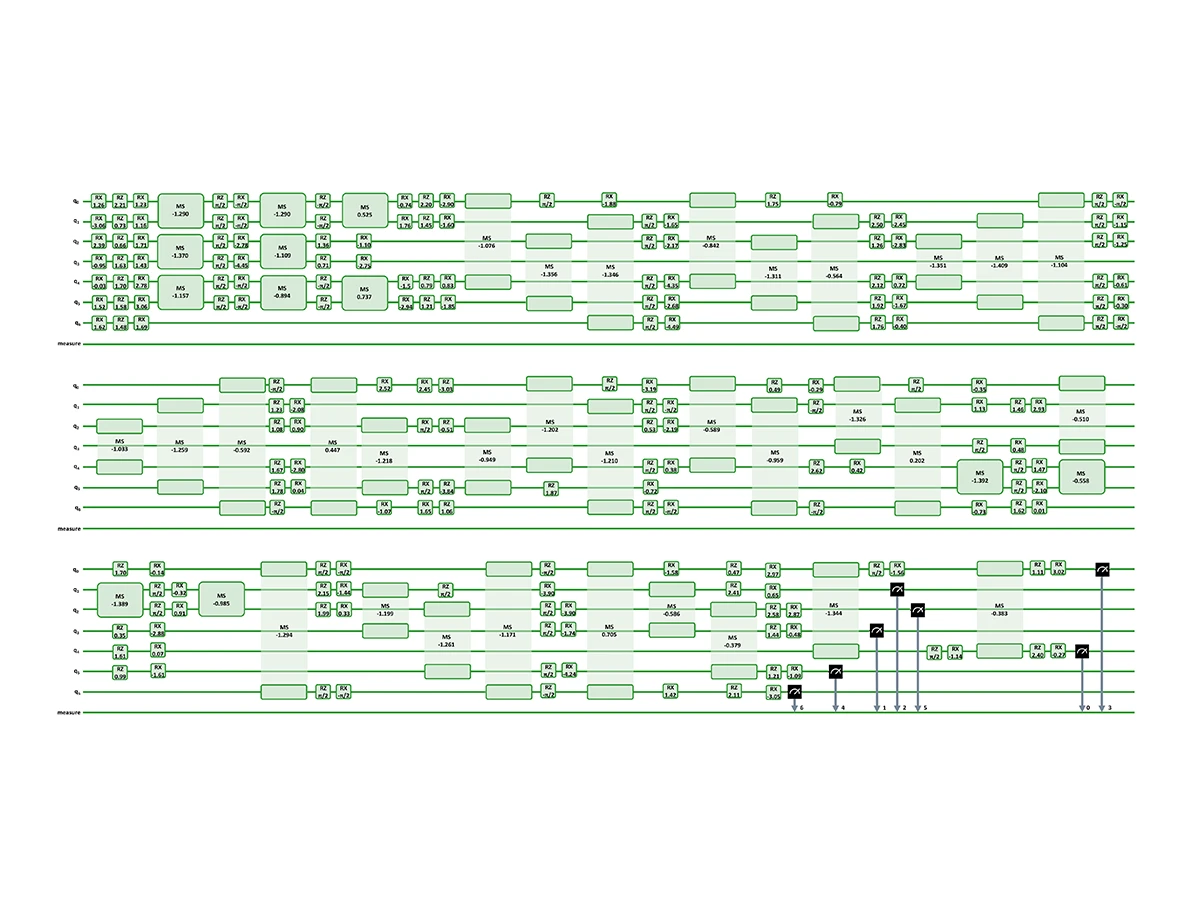Quantum Volume – 128
The aqt pine system achieves the highest published quantum volume of 128 for a system that is designed, built and located in europe.Quantum volume – 128
The Quantum Volume Test is an internationally applied benchmark that assesses and describes the computational power of a quantum computer with a single number. The higher the number, the more powerful the computer. The number is sensitive to the size of the quantum register, the quality of the control, and the versatility of controlling quantum information in different locations of the quantum memory. Although there are many more possible benchmarks available that may test individual components, the Quantum Volume Test is one of the simplest and most commonly used benchmarks that provides a holistic statement of the overall capabilities of a quantum system.

The PINE system has been designed by AQT, and a first prototype was validated in European Quantum Technology Flagship activity AQTION at the University of Innsbruck. As of today, the AQT PINE system holds a record quantum volume of 128 within Europe. This achievement is perfectly aligned with the targets set in the European Quantum Technology roadmap demonstrating strength of Austrian and European deep-tech development.
Supported by the European Innovation Council, AQT will make this system available via the cloud to European and international researchers soon.
We ran 870 random quantum volume test circuits with 200 shots each on the AQT PINE system. The test resulted in a mean Heavy Output Probability (HOP) of 0.714 +/- 0.015 with twice the standard deviation of 2σ=0.031. Thus, the measured HOP is above the required threshold of 2/3 with a 99.89% confidence. The implemented circuits were generated using IBM Qiskit. The random circuits were further optimized using methods described in a publication by Quantinuum, which include Block combination, Block approximation, Mirroring and Arbitrary angles for Entangling gates. We highly appreciate the open access policy upheld by both academic and industry players in the thriving quantum ecosystem which helps to accelerate the impact of quantum technologies globally.

Figure 1: Measured Heavy Output Probabilities
For the Quantum Volume Test to be successful, the Heavy Output Probability (HOP) mustbe above the specified threshold of 2/3. The data shows that the mean HOP is above this treshold and the associated uncertainty decreases as the number of random circuits increases. Finally, the HOP exceeds the threshold by more than two standard deviations (2 sigma), which certifies that the AQT PINE system has a Quantum Volume of 128.
Figure 2: Random Circuit Example
The Quantum Volume Test consists of a series of random quantum circuits. A random circuit starts with the preparation of the qubits, followed by the implementation of several local single-qubit gates and interleaving two-qubit gates. Finally, the state of the qubits is measured and the result is obtained in the form of a classical bit string. The number of qubits (vertical extent) corresponds to the circuit width and the number of gate realizations (horizontal extent) describes the circuit depth.


Figure 3: Versatile and simple control
Using the programming language Python and various supported quantum computing interfaces, we provide versatile and simple control of the AQT quantum computing hardware. For instance: the implementation of the presented Quantum Volume Test requires only a few lines of codes in Qiskit. Individual circuits can already be tested on our publicly available Quantum Simulators.
© Photocredits: Dieter Kühl


